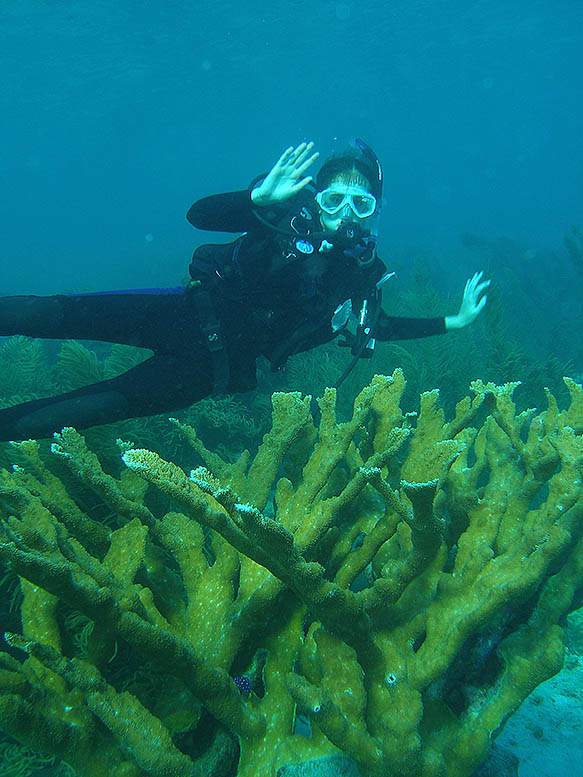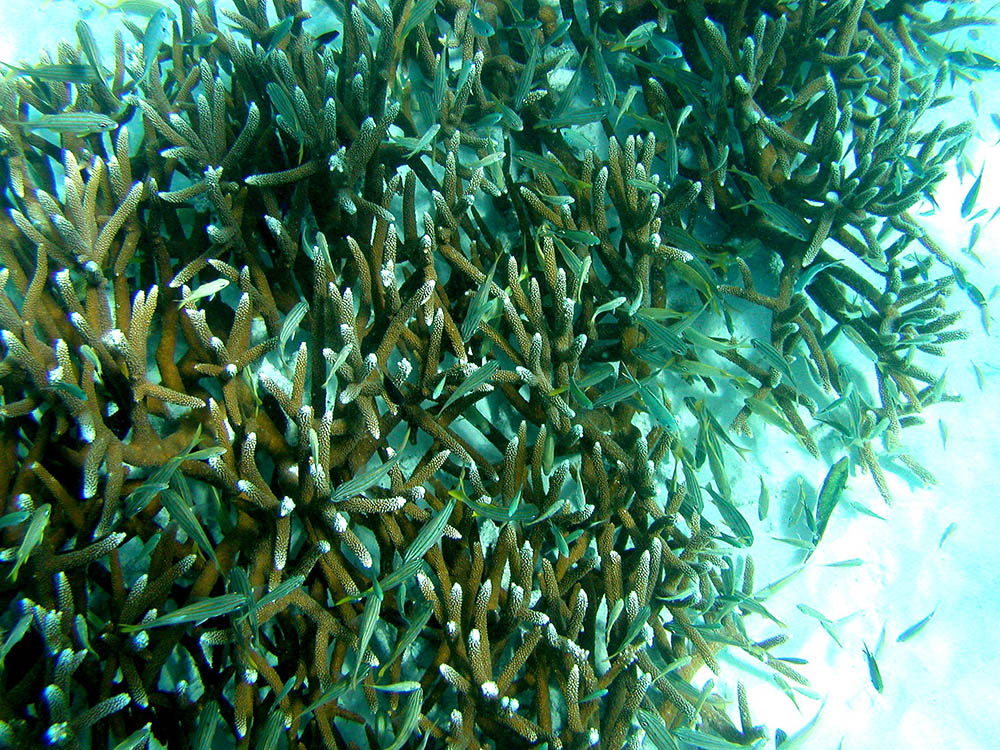
A diver passing over colony of Elkhorn coral. Elkhorn coral lives in shallower water and is prone to destruction by large waves caused by hurricanes. Image by NOAA / CC license
via National Marine Fisheries Service, originally published Sept. 4, 2014
FOR IMMEDIATE RELEASE:
September 4, 2014
NOAA Fisheries released a draft recovery plan today for Elkhorn and Staghorn Corals [Acropora palmata, and A. cervicornis respectively – Ed.]. Both types of coral were listed as threatened under the Endangered Species Act (ESA) in 2006. This new draft plan identifies criteria that, when met, would allow the coral species to be removed from the list of endangered and threatened species under the ESA.
The recovery plan contains nearly two dozen actions necessary to achieve the plan’s goals. The plan also addresses research and monitoring, ways to reduce threats, and steps to enhance the population by actively outplanting. Outplanting is putting corals back on the reef after they have been grown in nurseries.
Global threats related to climate change include elevated ocean temperature, disease, and ocean acidification. Some of the local threats to the species include habitat loss, pollution, reduced reproduction, and physical damage.
“Reducing these local threats can help improve the ability for corals to cope with global threats such as climate change,” said Dr. Roy Crabtree, Regional Administrator, for NOAA Fisheries Southeast. “Similar to the higher likelihood of getting sick when you’re under stress, corals may be more susceptible to and less able to recover from global and regional threats.”
As carbon dioxide increases in the atmosphere, the ocean warms beyond what corals can withstand. This leads to bleaching and an increase in the frequency and severity of disease outbreaks, causing die-offs.
Elkhorn and Staghorn corals were once the dominant coral species on Caribbean reefs, but have declined by up to 97% since the 1970’s. The main causes of decline are disease, temperature-induced bleaching, and storms.

Staghorn coral grows quickly. This stand has grown back since Hurricane Lenny in 1999. Note the many small fishes living among the branches. Image by NOAA / CC license
Coral reefs are critical to the health of marine ecosystems and have measurable economic value to coastal communities around the world. They provide food and shelter for more than 25% of fish in the ocean and up to two million marine species. Corals also provide shoreline protection from damaging effects of major storms and contribute about $483 million annually to the U.S. economy through tourism and recreation.
The recovery plan – developed by a team of state, federal, and academic partners – is not regulatory. It is a non-binding guidance document that serves as a roadmap to species recovery, laying out where we need to go and how we get there.
NOAA’s mission is to understand and predict changes in the Earth’s environment, from the depths of the ocean to the surface of the sun, and to conserve and manage our coastal and marine resources.
On the web:
NOAA Fisheries Service, Southeast Regional Office: http://sero.nmfs.noaa.gov/
Like us on Facebook US NOAA FISHERIES GOV
Follow us on Twitter @NOAAFish_SERO
Contact:
Allison Garrett
(727) 551-5750
###
Image Credits: NOAA
Staghorn Coral
Elkhorn Coral




